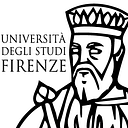Uniform design innovation: Bridging academia and industry through multidisciplinary collaboration
From Firenze University Press Journal: Fashion Highlight
Ludovica Rosato, University of Bologna
Alberto Calleo, University of Bologna
Simona Colitti, University of Bologna
Giorgio Dall’Osso, University of the Republic of San Marino
Valentina De Matteo, University of Bologna
The article presents a proposal for a multidis-ciplinary and multistakeholder learning and collaborative model that connects the worlds of business and academia through the presentation of an experimentation. ‘Pluriform: Pluriverse Uniform Design’ is a project led by the Advanced Design unit, a research group heading the courses in Design at the University of Bologna, commissioned by Trenitalia Tper, the regional rail transport company in Emilia-Romagna, and in collaboration with the Polytechnic University of Milan, School of Design. The project aimed to dress the staff of the commissioning company by involving students and faculty from the two schools of fashion, product and service courses with local companies. The experimentation presented here aims to highlight the ways in which a learning model involving professionals from the world of research and industrial production can enable the elaboration of outputs in line with the current challenges of the contemporary fashion system. The experimenta-tion, along with the proposed method and model, aims at testing and verifying the relevance of the so-called collective intelligence in design-driven innovation processes, particularly those of “open innovation”. The latter is defined as “as a distributed innovation process based on purposively managed knowledge flows across organisational boundaries” (Chesbrough & Bogers, 2014). The topic of collective intelligence has become increasingly popular in literature since the advent of the Internet and has been addressed in various scientific fields. Analysis of the most significant contributions shows how the application of the concept is independent of the size of the reference group, ranging from detecting cooperation dynamics in small offline groups to those in large groups in distributed online contexts (Salminen, 2012). The proposed experiment confirms the relationship between collective intelligence, as a result of the combined knowledge and expertise of a diverse group, and innovation readiness in enterprises (Lee, 2019). In this light, a model is presented that, through co-design processes, is able to propose new strategies for an industry transformation, in a challenging application theme such as technical clothing and uniforms, where what is worn is loaded with values and symbols in society.
METHODOLOGY
This article presents the case study of a multidisciplinary and multistakeholder model that has been designed and applied into a hybrid research-ed-ucation-business context. The article structure follows the steps that from the meta-design and preparatory analysis led to the implementation of the model. The model design started with the analysis of the practices that the Advanced Design Unit has adopted in similar hybrid contexts. A brief overview is presented in the state-of-the-art paragraph. The specificity of ‘Pluriform’ is addressed to define a flexible model capable to mediate the expected outcomes, needs, and schedules of the different stakeholders. The phases of the collaborative model structure are introduced describing the three macro-phases, the involved actors, the means and methods of collaboration, and the expected outcomes. For the scope of this article, an in-depth analysis of the first meta-design phase is presented highlighting the sub-activities and the range of modalities that have been adopted. The implemented participatory, co-design, and training models are presented from the perspec-tives of the involved actors. In the discussion paragraph, the identified strength, and limits of the meta-design phase of the model are investigated, also in relation to the subsequent development and implementation phases that will be presented in future works. The last paragraph presents the conclusion and the possible future development of the experimented model.
DOI: https://doi.org/10.36253/fh-2717
Read Full Text: https://riviste.fupress.net/index.php/fh/article/view/2717
